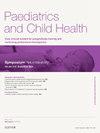克氏综合征:每个儿科医生都需要知道的
Q3 Medicine
引用次数: 0
摘要
Klinefelter综合征(KS)是一种常见的性染色体变异,大约每750个活产男婴中就有一个。核型通常为47,xxy。然而,四分之三的KS男性从未被确认身份。寿命不会减少。没有特定的婴儿表型。青春期前的生长通常很快,孩子可能比父母的中等身高还要高。青春期的生长没有增加,所以身材极高是不寻常的。超重和中心性肥胖发生在一些男孩的童年中期。婴儿的发育通常在年龄相关的范围内,尽管三分之一的婴儿可能需要言语支持,三分之二的婴儿可能需要阅读和语言支持。智商在人口范围内。青春期开始不会延迟,睾酮水平通常在开始时增加,但在青春期后期往往不能上升,生化性腺功能减退可通过早晨睾酮浓度低来诊断。临床性腺功能减退常伴有中枢性肥胖、女性乳房发育、肌肉发育和力量低下。通过透皮凝胶或注射补充睾酮可能有助于改善身体发育和功能。精子产生严重减少,导致大多数无精子症。生育咨询很重要,但直到青春期晚期才需要评估,那时可以进行手术睾丸精子提取,在年轻时没有优势。本文章由计算机程序翻译,如有差异,请以英文原文为准。
Klinefelter syndrome: what every paediatrician needs to know
Klinefelter syndrome (KS) is a common sex chromosome variation around one in 750 live male births. The karyotype is usually 47,XXY. However, three quarters of KS males are never identified. Lifespan is not reduced. There is no specific infant phenotype. Prepubertal growth is generally rapid and children may become taller than the mid-parental height. Adolescent growth is not increased, so extreme tall stature is unusual. Overweight and central obesity occur in some boys from mid-childhood. Infant development is usually within age related ranges, although one third may need speech support and two thirds reading and language support. IQ is within the population range.
Puberty onset is not delayed and testosterone levels increase typically at first but often fail to rise in late puberty and biochemical hypogonadism is diagnosed by a low morning testosterone concentration. Clinical hypogonadism is common with central obesity, gynaecomastia and low muscle development and strength. Testosterone supplementation with transdermal gel or injections may help to improve physical development and functioning. Sperm production is severely reduced resulting in azoospermia in the majority. Fertility counselling is important but assessment not needed until late adolescence when surgical testicular sperm extraction can be performed, with no advantage at younger ages.
求助全文
通过发布文献求助,成功后即可免费获取论文全文。
去求助
来源期刊

Paediatrics and Child Health (United Kingdom)
Medicine-Pediatrics, Perinatology and Child Health
CiteScore
1.20
自引率
0.00%
发文量
70
 求助内容:
求助内容: 应助结果提醒方式:
应助结果提醒方式:


